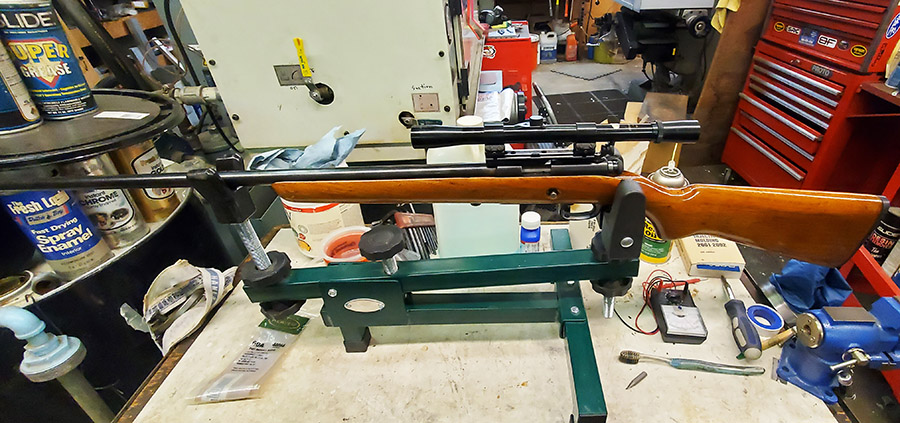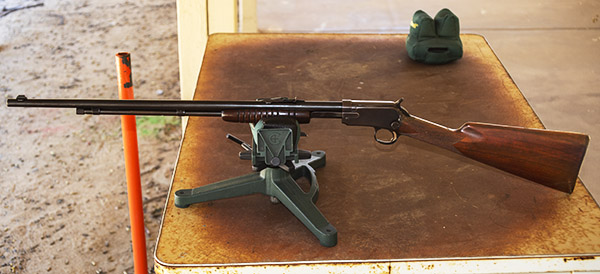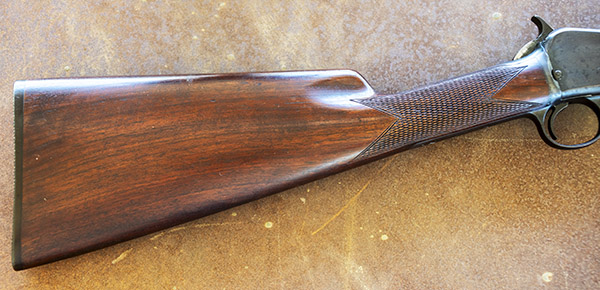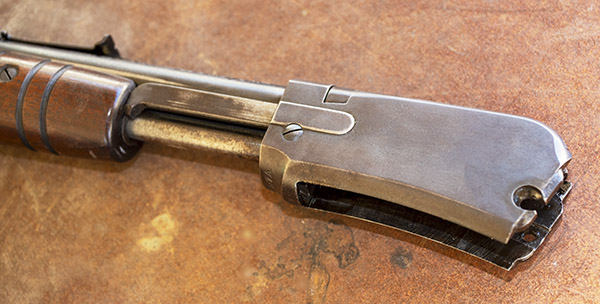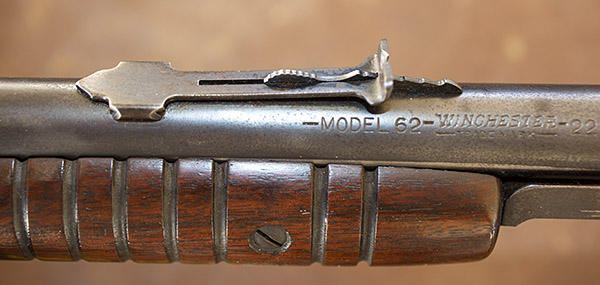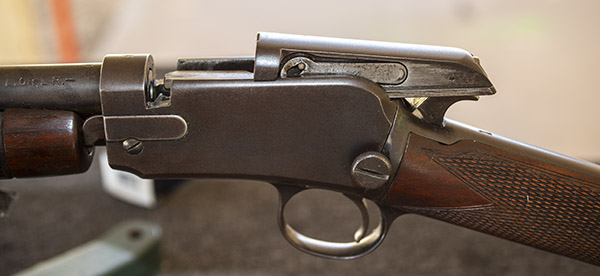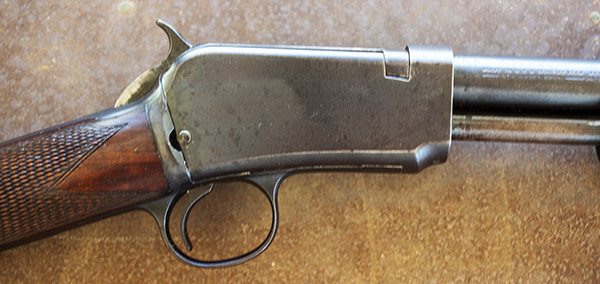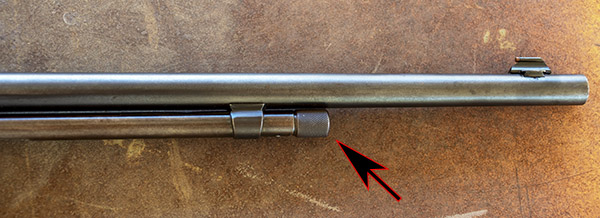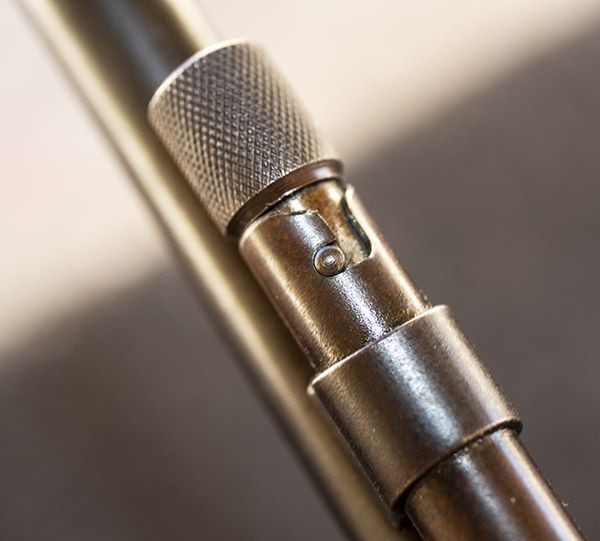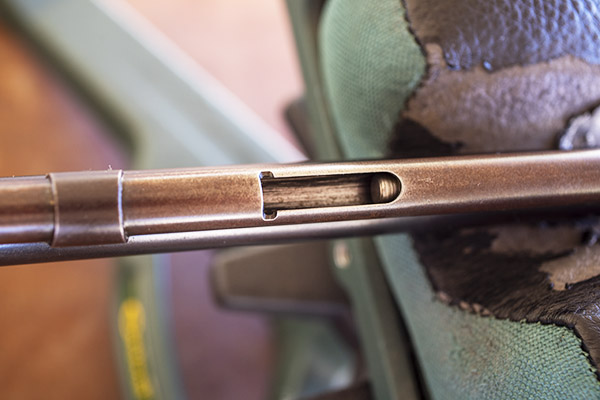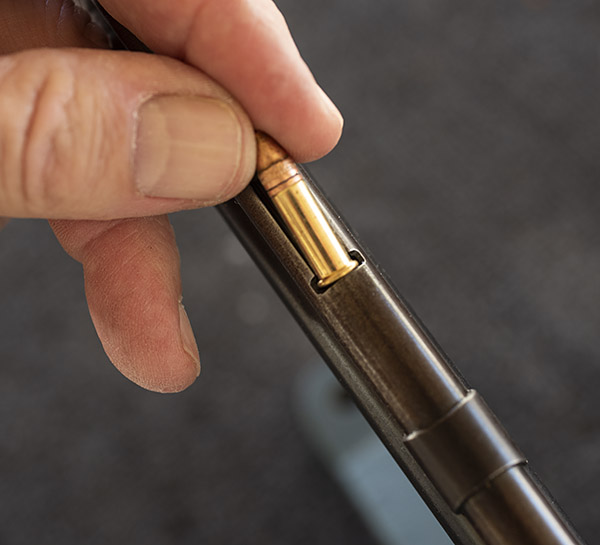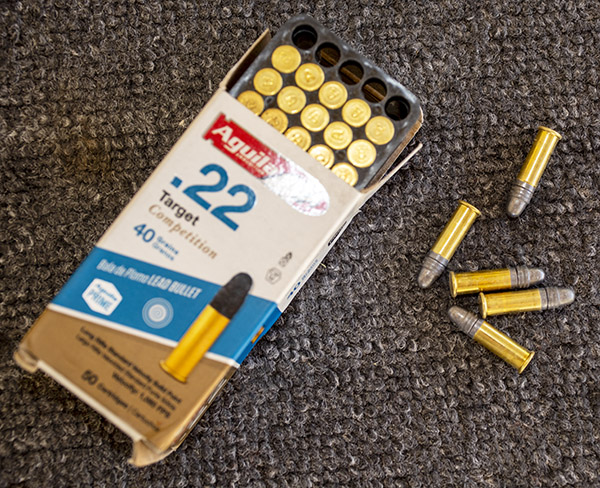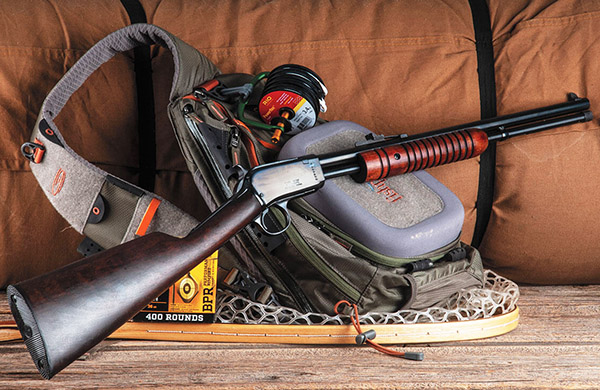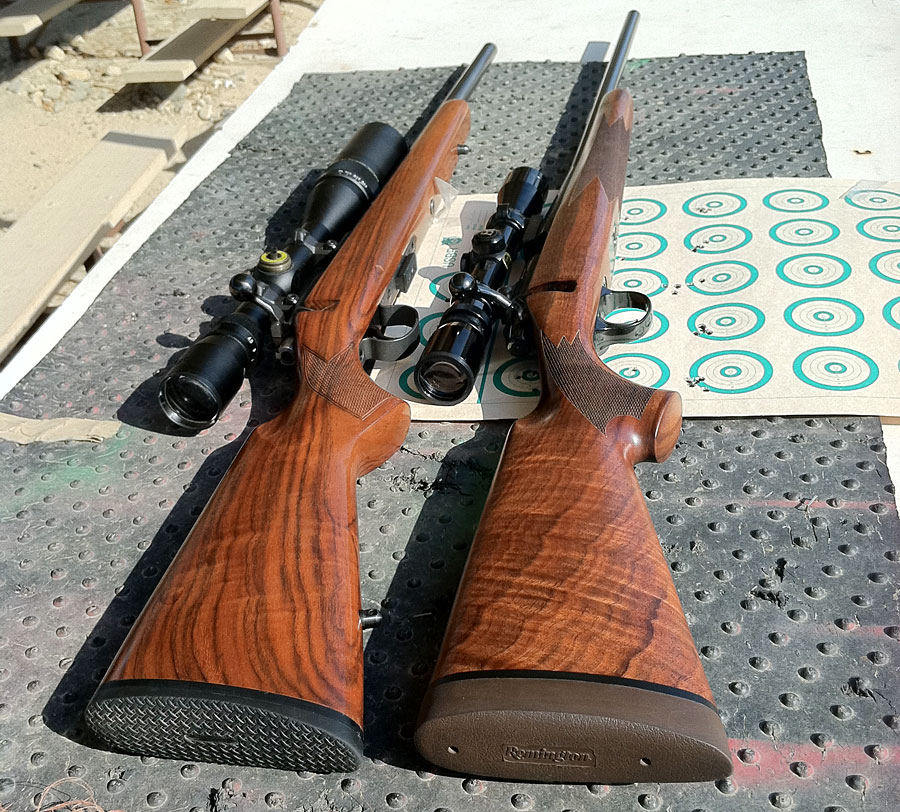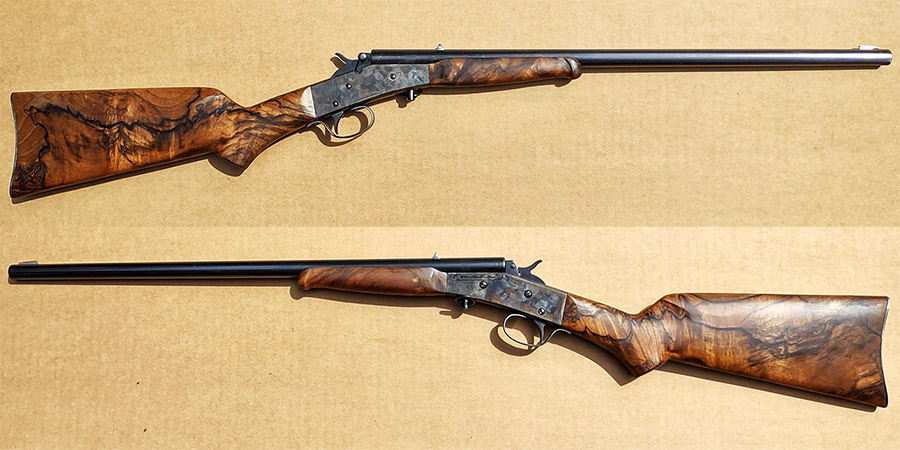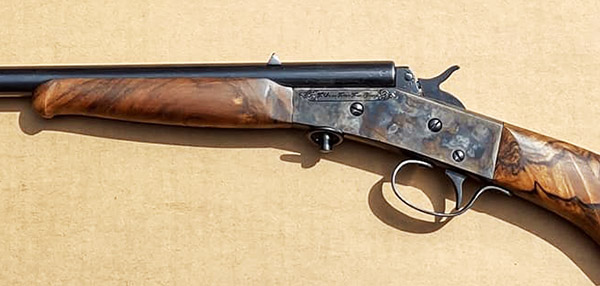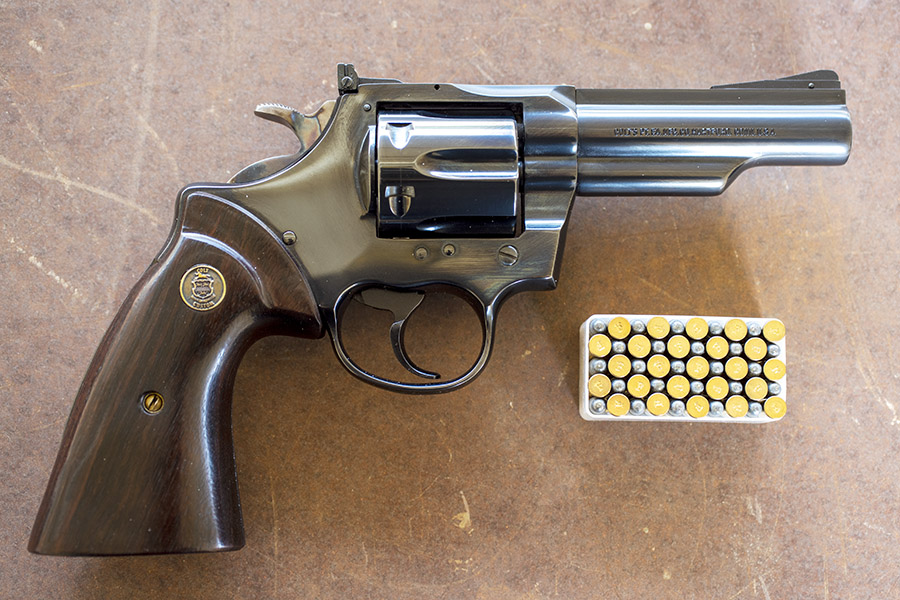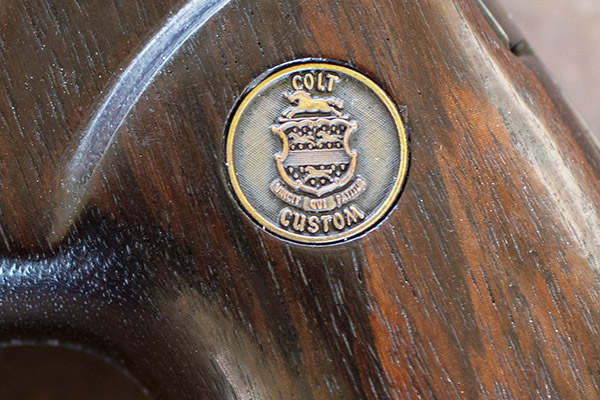By Rob Morel
After seeing Joe Berk’s article on the .22 bolt action Springfield rifle, I thought about my recent project Model 69 Winchester. I bought it from my favorite gunstore. It was in pretty bad shape when I bought it and it was obviously well used. The Winchester had a screw for a bolt handle that did not work well, a homemade peep sight, the rifle was rusty, and it had a dinged-up stock with a lot of miles on it. I bought the rifle for $150 knowing it would make for a good project. I wanted to fix and preserve it as a plinker.
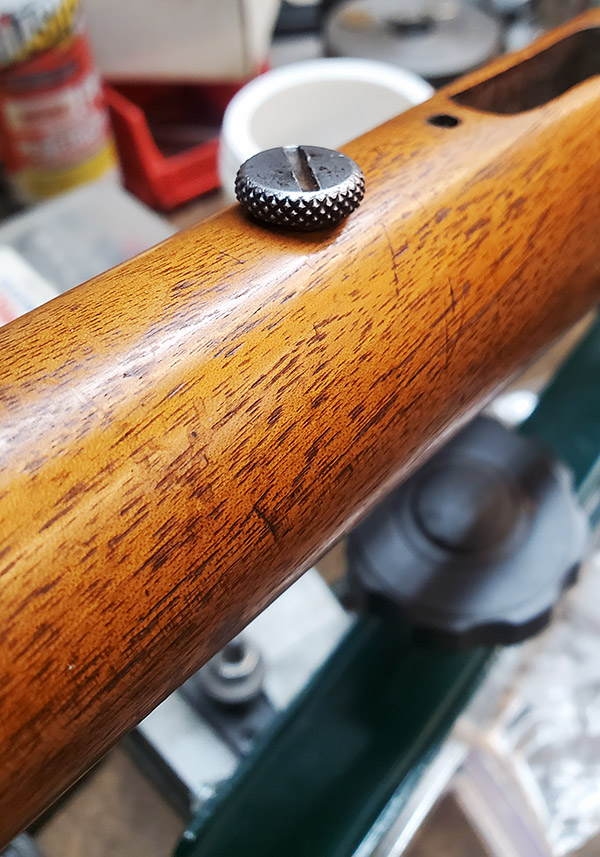
The Model 69 Winchester is an old magazine fed rifle made in 1936. It is an interesting vintage .22. I believe it was made around 1935 based on the exposed side magazine release and the exposed screw that holds the barrel to the stock (as shown in the above photo). These two features make it one of the earlier Model 69 rifles Winchester produced.
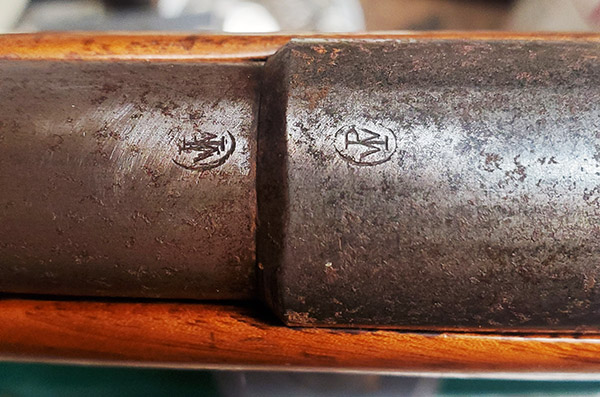
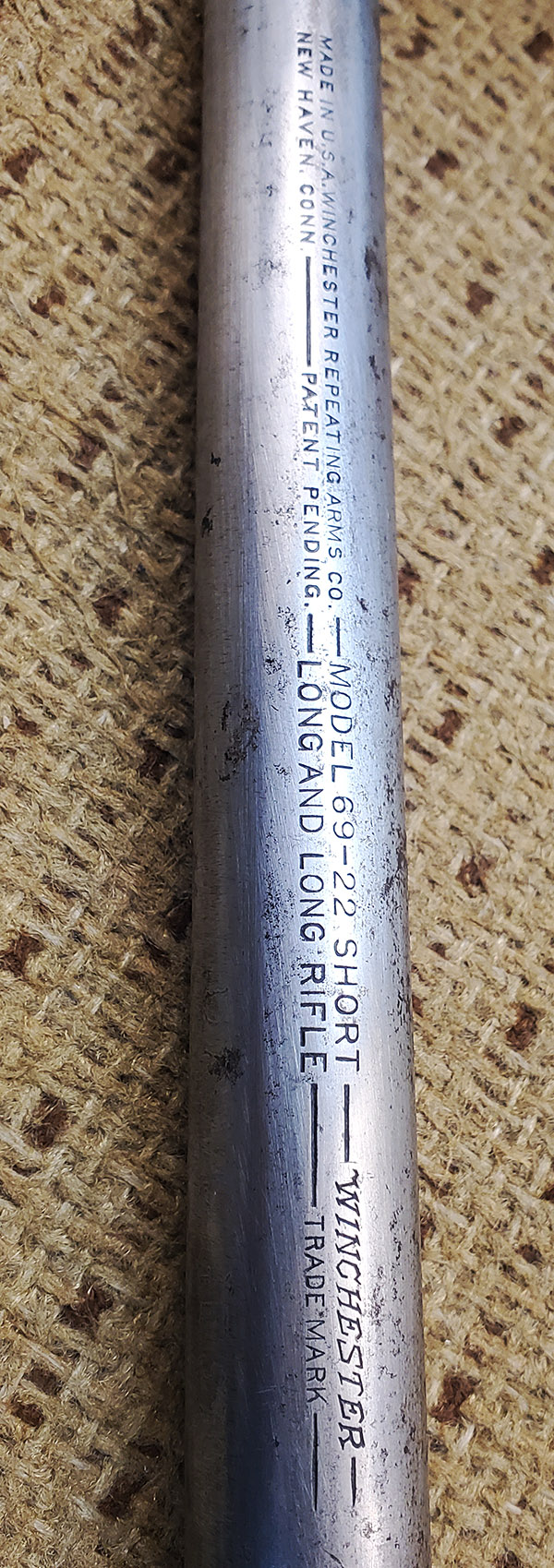
The finish on the barrel and the receiver had left the building a long time ago. It exhibited what might be called an authentic patina, but to me it was just rust and I wanted to prevent it from heading further down that road. I sanded it very lightly and used Birchwood Casey cold blue to preserve it. That turned out well eonugh, but it was not as good as a hot blue job would have been. Maybe I will clean it better and redo it someday. But my cold blue approach had the rifle looking good (I think for now the steel finish is good enough), so I continued fixing other things.

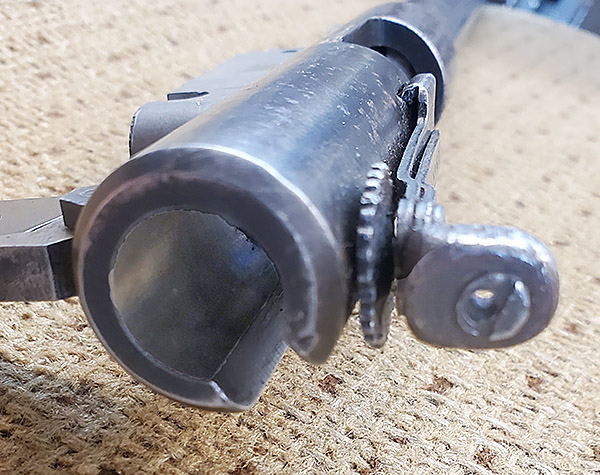
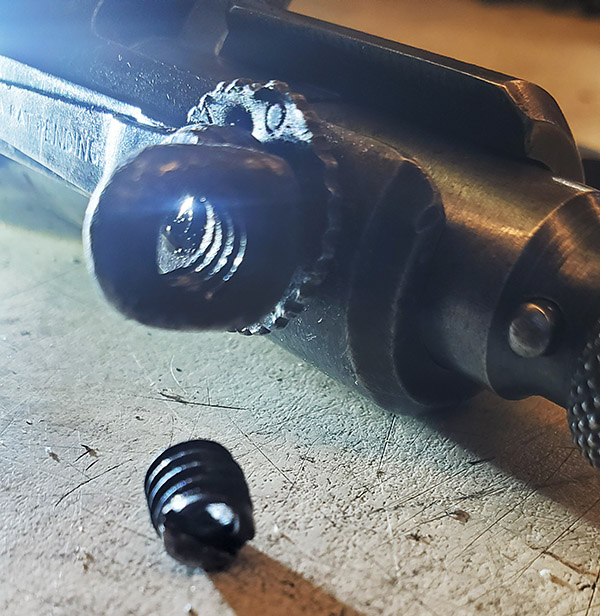
The rifle’s original peep sights had been “fixed” (read: Bubba’d) by a shade tree gunsmith. The sights worked, but they looked terrible. Bubba had drilled out the original aperture and tapped it to a larger thread. Then he took and sawed off a length of all thread (all thread is threaded rod) after drilling a small hole way off center. Maybe he did that to allow for windage by rotating it in the threads…who knows? Or maybe he was just sloppy.

I machined a nicer-looking knurled retina (see the picture above), but I ended up putting a scope on it, so for now the peeper looks good but is not used. I’ve seen comparable sights on Ebay for over $225, so I’ve got that going for me.

The old bolt handle was a standard screw from someone’s grandpa’s blacksmith stable. It didn’t work. The handle needs to go through two sleeves to cock the firing pin properly. It wasn’t too hard to make a new one that works well. I had the little ball end you see above in my tool box for years. It was waiting for me to use it on something, and it looks like it belongs on this rifle.

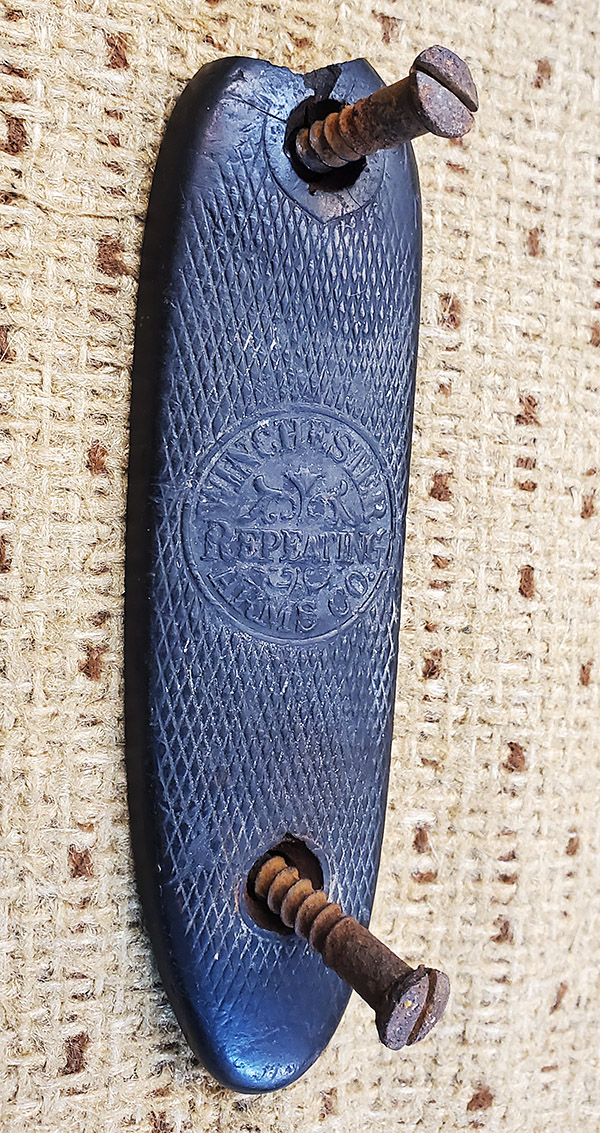
The rifle’s wood stock showed its 85-plus years of use, so I sanded it lightly, stained it, and gave it a clear varnish finish. I similarly cleaned up the buttplate and its screws. I think it all turned out well.
After doing the above work, it was time to sight the rifle in. Waiting until it was dark, I clamped the rifle in a cleaning rest so it wouldn’t move on the table. With the bolt taken out I could look through the barrel at a distant streetlight. I then looked through the scope and adjusted the scope’s windage and elevation so it was right on the streetlight several hundred yards away. After making sure the barrel and scope were secure, I tried the rifle on the farm the next day. The rifle can shoot .22 Short, Long, and Long Rifle ammunition. I could hit dirt clods fairly consistently from 40 to 100 yards away. That’s good enough for now. After shooting it for the first time, I had to go out and celebrated with a Yoo-Hoo and a new box of 50 rounds. I’ll next shoot at a paper target from a rest to hold it steadier then my 66-year-old arms can.

Overall, resurrecting the Model 69 Winchester has been a fun and satisfying project. It didn’t cost very much and gave life back to this 85-year-old firearm that is a hoot to shoot. It would be great for a youth rifle and for teaching kids to shoot. The rifle is small and light, and it can be taken apart for cleaning and reassembling quickly.
Meet our newest contributor: Rob Morel

Rob Morel is a good guy…a considerate, literate, and motorific kind of man. I first met Rob on the Western America Adventure Ride, when guys who owned Zongshen RX3 motorcycles joined Joe Gresh, a group of Chinese riders, a couple of guys from Colombia, and yours truly for our 5,000-mile romp around the US. Rob joined us in Idaho, and I knew I was going to like him the minute I saw the guy seated by the side of the road, waiting for us, somewhere before we crossed into Hells Canyon. It said a lot about Rob: He would be ready, he wouldn’t hold the rest of the group up, and he put others ahead of himself. Like I said, I liked him instantly. Rob has ridden with us a number of times…on that first Western America Adventure Ride, in Baja, on another ride through the Southwest, and more. He’s a machinist, a motorcyclist, a shooter, and a writer. This is Rob’s first piece as an ExNotes contributor. Welcome aboard, Rob, and thanks for this story!
– Joe Berk
More stories in the Rimfire Series are here.
Never miss an ExNotes blog!

